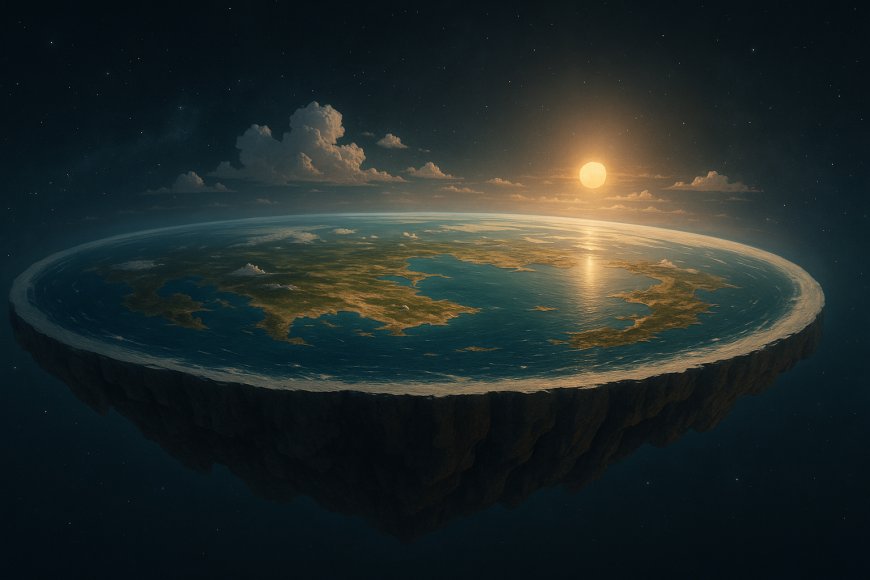🧪 The Science They Ignore: 5 Experiments That Support a Flat Earth
Discover five simple, repeatable experiments that challenge the globe model and support flat Earth observations. From laser tests over water to the sun’s circular path, explore science that mainstream sources often ignore.

You don’t need a NASA budget to question the shape of the Earth — just your own eyes, some logic, and a curious mind.
While mainstream science promotes the globe model, many simple, repeatable experiments suggest otherwise. These hands-on observations are ignored or dismissed by traditional academia, but they continue to intrigue and convince thousands of independent researchers worldwide.
Below are five key experiments that support the flat Earth model — each one easy to replicate, observable, and grounded in direct experience.
🔦 1. The Laser Over Water Test
What You Need:
A calm lake or still body of water, a powerful laser pointer, two people, and measuring targets at various distances.
The Experiment:
Shine the laser across the surface of the water at night. According to the globe Earth model, the beam should eventually curve downward due to Earth's curvature and drop below the target line.
The Observation:
Flat Earth researchers consistently report that the laser beam remains level, striking targets across long distances without dipping.
Result:
No measurable curvature — the surface remains level across miles of water.
🌄 2. Long-Distance Observation (Zoom Camera Test)
What You Need:
A high-zoom camera (such as the Nikon P1000) and a distant object such as a shoreline, ship, or city skyline.
The Experiment:
Watch distant objects disappear beyond the horizon. Then, zoom in on them.
The Observation:
Objects that appear to “sink” out of view can often be brought back into full or partial view with magnification.
Result:
The horizon is not the edge — it's simply the limit of unaided human eyesight. This challenges the notion that the curvature hides distant objects.
📍 3. Gyroscope and Inertial Drift Test
What You Need:
A ring laser gyroscope, a mechanical gyroscope, or a Foucault pendulum.
The Experiment:
If Earth is spinning at roughly 1,000 mph at the equator, gyroscopes should detect a consistent rotational drift.
The Observation:
Experiments with high-precision gyros either show no measurable drift or results that vary wildly and contradict the expected 15° per hour rotation.
Result:
No consistent evidence of Earth’s rotation. Instruments suggest we are stationary — not spinning through space.
🛫 4. Level Flights Don’t Curve
What You Need:
Commercial flight data, a GPS-enabled altimeter, and aviation principles.
The Experiment:
Aircraft maintain level flight paths for thousands of miles. On a globe, pilots would have to continuously adjust pitch downward to follow the curve.
The Observation:
Pilots do not report making such adjustments. Planes remain level relative to the ground.
Result:
Level flight aligns with a flat surface, not a curved one.
☀️ 5. The Sun’s Circular Path (Time-Lapse)
What You Need:
A clear view of the sky and a full-day time-lapse camera setup.
The Experiment:
Record the sun’s movement from dawn to dusk.
The Observation:
Instead of a straight east-to-west arc around a sphere, the sun traces a circular pattern across the sky — as described in flat Earth models where the sun circles above the Earth’s plane.
Result:
The sun’s movement fits a dome-like system, not a rotating ball Earth.
🧠 Try It Yourself
Flat Earth isn’t about belief — it’s about direct observation and questioning assumptions.
Mainstream science often ridicules these simple experiments. But what if they’re being ignored for a reason? What if the truth is hiding in plain sight?
🔍 Don’t rely solely on textbooks or space agencies. Do the experiments. Watch the horizon. Test the evidence.
See the world for what it is — not what you’ve been told it is.
Tags: flat earth experiments, laser test, gyroscope earth spin, horizon zoom test, flat earth flight path, sun time-lapse, debunking globe model, question everything, science for truth
Would you like a PDF version or a version with image placements next?

 Admin
Admin 





